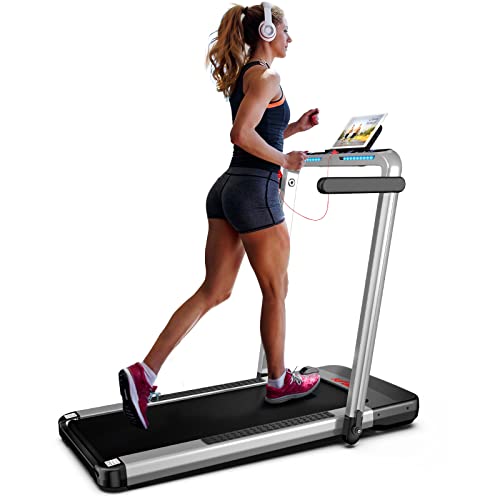8 Tips To Up Your Walking Machine Game

본문
The Walking Machine: A Comprehensive Guide to Your Fitness Companion
In today's busy world, where time is a luxury, preserving a consistent workout regimen can be an obstacle. For many, a walking machine-- frequently called a treadmill-- functions as an ideal fitness companion. This short article offers a thorough appearance at walking machines, including their advantages, types, maintenance ideas, and regularly asked questions.
Why Choose a Walking Machine?
Walking machines use a useful and effective way to include cardiovascular exercise into life. Here are numerous essential advantages:

- Convenience: Walking machines permit individuals to exercise anytime, despite climate condition or time constraints. They are best for hectic schedules.
- Versatility: Users can stroll, jog, or perform at their own pace and intensity.
- Safety: Walking machines provide a lower danger of injury compared to outdoor walking or running, specifically for novices or those recovering from injuries.
- Tracking Progress: Many treadmills come with built-in monitors that track metrics like speed, range, and calories burned.
Kinds Of Walking Machines
When considering a walking machine, it's vital to choose the right type based upon specific physical fitness objectives and space restrictions. Below are the primary types of walking machines:
| Type | Description |
|---|---|
| Manual home treadmills uk - https://zkml-Hub.Arml.io/treadmill-price8048 - | These machines do not have a motor, and users require to walk or run to rotate the belt. |
| Electric Treadmills | Powered by an electric motor, permitting users to set the speed and slope easily. |
| Folding Treadmills | Created for easy storage, these treadmills can be folded when not in use. |
| Desk Treadmills | Ideal for a double work and workout environment, these compact machines permit walking while working. |
| Incline Trainers | These permit users to simulate uphill walking, enhancing workout strength and calorie burn. |
Picking the Right Walking Machine
Choosing the ideal walking machine can substantially affect motivation and effectiveness. Here are some elements to think about:
Key Features to Look For
- Motor Power: An effective motor guarantees a smooth and constant workout. For periodic walkers, a 1.5 HP motor is usually adequate; for much heavier use, look for 3.0 HP and above.
- Belt Size: A wider and longer belt offers more space for a comfortable stride. Requirement sizes range from 16 inches large and 50 inches long.
- Slope Options: Adjustable incline settings can simulate walking or running uphill, increasing the intensity of the exercise.
- Shock Absorption: Good shock absorption lowers the danger of joint injuries and enhances comfort.
- Console Features: Look for built-in workouts, heart rate screens, and connection features like Bluetooth for a more interesting experience.
Budget plan Considerations
Walking machines come in a large variety of costs, depending on functions and construction quality. Here's a rough budget breakdown:
| Price Range | Features |
|---|---|
| Under ₤ 300 | Fundamental manual or small electric treadmills with minimal features. |
| ₤ 300 - ₤ 700 | More advanced electric treadmills with slope, medium power motors, and much better guarantees. |
| ₤ 700 - ₤ 1500 | Top quality electric treadmills with bigger built-in screens, substantial features, and warranties. |
| ₤ 1500 and above | High-end designs offering advanced technology, features, and durable building for severe fitness enthusiasts. |
Upkeep Tips for Your Walking Machine
To guarantee longevity and optimal efficiency of a walking machine, consider the following upkeep ideas:
- Regular Cleaning: Dust and sweat can build up on the machine and the belt. Clean down the surfaces and clean the belt regularly.
- Lubrication: Depending on the model, lubing the running belt occasionally can avoid wear and tear. Check the manufacturer guidelines for advised lubrication schedules.
- Examination: Periodically inspect the machine for loose screws or worn parts. Tighten and change as needed.
- Calibration: Occasionally, inspect the calibration of your machine's metrics to ensure they supply precise data.
- Correct Use: Follow the producer's recommendations for weight limits and operational standards.
Frequently Asked Questions About Walking Machines
1. Are walking machines a great workout?
Yes, walking machines supply an excellent cardiovascular exercise, can aid with weight-loss, and improve general health.
2. How frequently should I use a walking machine?
Go for a minimum of 150 minutes of moderate-intensity aerobic activity per week, which can easily be accomplished with regular sessions on a walking machine.
3. Can I reduce weight on a walking machine?
Yes, incorporating a walking machine routine into a healthy diet can promote weight loss, particularly if combined with intervals and incline training.
4. Is it safe for senior citizens to utilize a walking machine?
Yes, walking machines can be safe for senior citizens with low-impact settings and safety features like hand rails. However, people should talk to their healthcare provider before beginning any workout program.
5. What's the difference in between a treadmill and a walking machine?
The term "walking machine" typically refers to a treadmill intended for walking, while "treadmill" can describe machines used for different strengths, consisting of running.
With their adaptability and benefit, walking machines can substantially boost one's fitness journey. By carefully picking the right type, ensuring appropriate maintenance, and integrating various exercise strategies, users can maximize their walking machine's advantages. As with any workout regimen, consistency is key to accomplishing lasting physical fitness results.

댓글목록0
댓글 포인트 안내